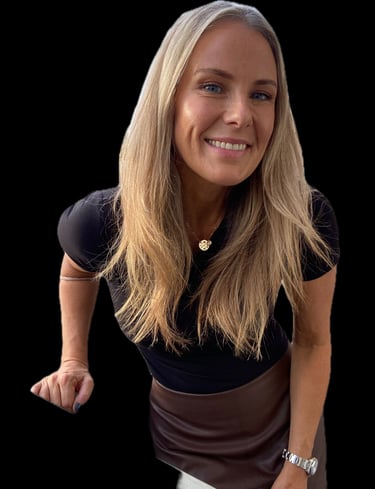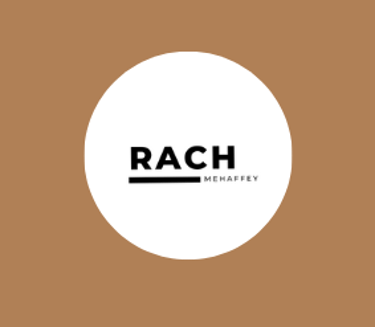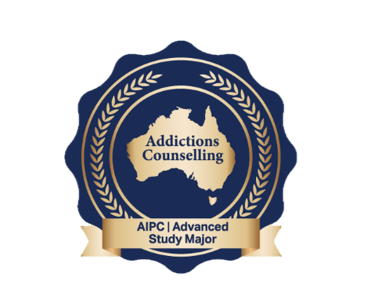How counselling helps you untangle your thoughts—and why CBT can be a powerful start
COUNSELLING
Written by Rachel Mehaffey
How counselling helps you untangle your thoughts—and why CBT can be a powerful start
Working to find yourself again is not an easy road to travel, and it's an even harder path to choose to find, but there comes a moment—sometimes slowly, sometimes all at once—when something in you realises: the pieces just don't fit anymore. What once may have felt right feels tight and suffocating, and you're just TIRED.
Not just the kind of tired that sleep can fix. It’s a heaviness in your chest, a tightness in your mind. You’re tired of repeating the same thoughts. The same reactions. The same patterns that feel safe but also suffocating.
It’s like you’ve been carrying a bag of invisible bricks each day, loaded higher and higher, heavier. See, we get stuck in this frame of mind where what we once decided must always be right. What we chose for ourselves earlier in life should always fit, but here is the thing—we change and we grow, often forgetting what we know but always learning along the way, and if there is one thing I can say with absolute confidence, it is that everyone changes; no one stays the same.
This is most often where counselling begins for my clients. A feeling of discomfort, sometimes screaming and at others a little niggle in the body and brain.
Not with a dramatic breakdown or a crisis moment (though sometimes it does), but with a whisper that says:
Something needs to shift.
What Counselling Really Is
Counselling, at its heart, is the work of returning to yourself.
It’s not about being fixed or cured. It’s not about erasing the past. It’s not even about always knowing what’s wrong. It’s about creating a space where you can make sense of what’s happening inside you—without judgment, without pressure, and without having to have it all figured out.
It’s sitting with someone who says, “Let’s go there together,” instead of, “You should be over this by now.”
For some people, counselling is a process of grieving what never got named. For others, it’s learning how to show up for life—with less fear, more choice, and a clearer understanding of their own mind.
That understanding?
It often starts with noticing the way you think.
The Mind Can Be Loud—and That Matters
Our thoughts are constant. Sometimes helpful, often critical, occasionally wild. They come in hot, automatic, and convincing—especially when we’re anxious or overwhelmed.
The brain loves efficiency, even if it means recycling the same old thought loops:
“I always mess things up.”
“People will think I’m a failure.”
“I’m not doing enough.”
“Something bad is going to happen.”
And the thing is, we don’t even notice most of them. We just feel the weight they leave behind—the fear, the shutdown, the shame, and the avoidance.
This is where CBT comes in. Cognitive Behavioral Therapy.
CBT: A Map for the Mind
CBT is one of the most well-known and well-researched types of therapy. It doesn’t dig too deep into your past (though it may come up), and it’s not about exploring your dreams or diving into your childhood (though those can matter too).
Instead, CBT is all about now:
What thoughts are showing up?
How are they impacting how you feel?
And what behaviours are keeping those cycles going?
CBT works on the idea that thoughts, feelings, and behaviours are all connected. So, when you start to gently untangle one part—like your thinking patterns—the rest can begin to shift too.
The Magic in the Awareness
The first time someone actually hears one of their automatic thoughts out loud, it’s often a revelation.
"Wait, I say that to myself every single day… and I’ve never questioned it."
CBT helps you name those patterns.
The catastrophising.
The all-or-nothing thinking.
The assumptions, the inner critic, the fear-based stories that feel like facts.
It then offers tools—simple, actionable tools—to challenge, reframe, and respond differently. Over time, this creates new pathways in the brain. What once felt like a storm becomes something you can observe, maybe even soothe.
This isn’t about ignoring feelings or “thinking positive.”
It’s about choosing how to respond when your thoughts start to run the show.
Who CBT Can Support
While CBT is widely used for things like anxiety, depression, stress, OCD, PTSD and more, I think its real beauty lies in something broader:
It helps you get some distance from the thoughts that drag you down—and that makes space for clarity, choice, and change.
It’s especially helpful if:
You feel stuck in your head, overwhelmed or wired
You replay conversations or prepare for worst-case scenarios constantly
You struggle to believe positive feedback or feel “never enough”
You want structure, direction, and tangible tools in therapy
Sometimes even just learning that you can question your thoughts—that they’re not always true—is enough to shift something inside.
One Tool, Many Paths
CBT isn’t the only approach that works—and it’s not a perfect fit for everyone. That’s the thing about counselling: it’s not one-size-fits-all.
There are other ways to explore the mind—through acceptance, embodiment, creativity, or deep emotional processing. Sometimes they work best together. Therapy should meet you where you are.
But for many, CBT offers a sturdy starting point. A framework. A map.
And from there, you begin the deeper work of listening to yourself again — not the noise in your head, but the quiet wisdom underneath it.
Final Thoughts
If you’ve ever thought, “I don’t even know what I’m feeling anymore” or “I wish I could just get out of my own head”—know ”this: you’re not alone, and you’re not broken. I have been there; most of us have!
CBT reminds us that the way we think isn’t fixed. That we can shift. It shows us we can learn and apply the learning for change! We can respond instead of react to life, and if we aren't on the right path—darn right, we can change it!
Sometimes that’s where real healing begins—not with dramatic transformation, but with a quiet return to ourselves, one thought at a time.
Rach xx


I'm Rachel
A certified counsellor and life coach!
As a counsellor & reformer Pilates instructor, I work daily with women on their minds and bodies. I know from personal experience we are not alone in our struggles. There are common grounds, shared experiences, and definitely a way to move forward.
Enjoy the blog; I've designed it to be relatable.


Let's Connect
Instagram let's me inspire daily while LinkedIn helps me teach!
Just a single Mumma from Adelaide who cares how you live your life.
Let's connect & inspire each other.








